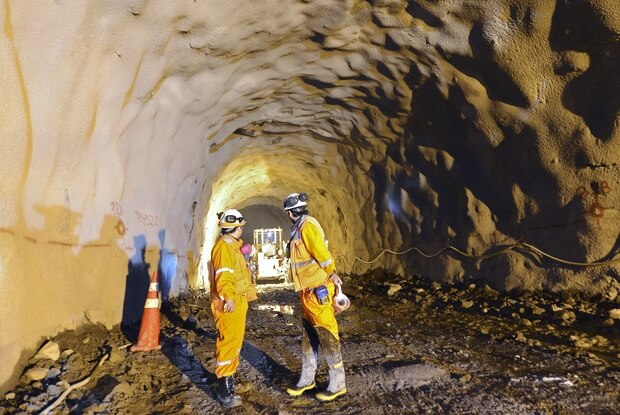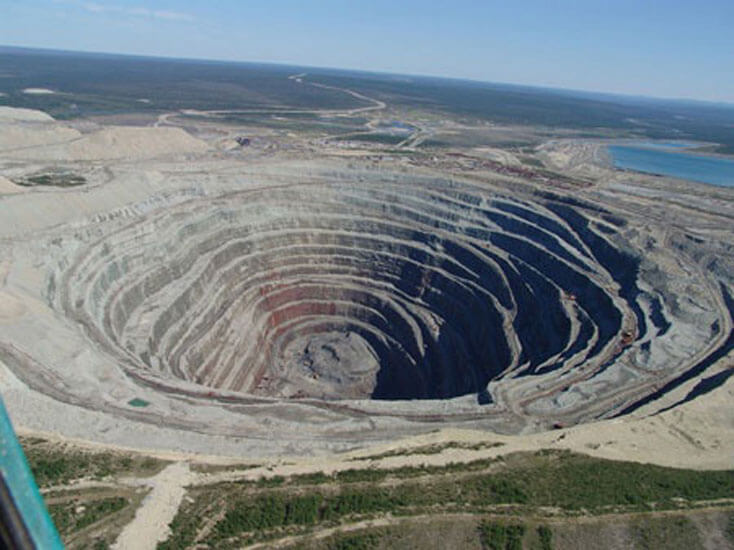
The world of mining is going back to where it all begun: underground. According to the experts, the need to preserve the environment and the birth of new technologies are causing big companies to move back to underground mining. The trend is quite notorious in Chile, but is quickly spreading to other countries.
Juan Carlos Guajardo, head of the Centre for Copper and Mining Studies (CESCO), has an opinion about it:
Not only Chile is opting for underground mining, but the industry itself is evolving towards that kind of extraction.
[The trend] is because large deposits that have been mined through open cast mining have better reserves at greater depths, and exploration in Chile is tending towards the deeper resources, since the minerals on the surface have long been exploited.
Chile possesses the world’s largest underground copper deposit, owned by the state National Copper Corporation of Chile (CODELCO), which has been mining it since 1905. Just El Teniente Division mine, the biggest underground pit in the South-American country, is responsible for the production of 137,000 tonnes per day. This means 25 percent of CODELCO’s total production of 1.75 million tonnes of fine copper in 2012.
However, at this rate, the deposit under the Andes mountain range, with 3,000 km of underground tunnels, has only enough ore to last until 2025. The solution? The New Mine Level project that is being developed by CODELCO and is expected to start operating in 2017, accessing 2.02 billion tonnes of reserves at greater depth, 100 metres below the current mining level.
This amazing project will extend the mine’s life for more 50 years with the help of cutting-edge technology and an investment of 3.3 billion dollars, almost the same as all the money invested in the mine throughout its entire history.
Chile’s economy depends greatly on copper, nationalised since 1971. In 2012, CODELCO made a profit of 7.5 billion dollars, the third-highest level in its history. That’s why the corporation is betting big money in this and other mining projects. Jorge Baraqui, acting manager of mining technology and innovation at CODELCO, says that:
The main advantage of underground mining compared to open pit mining is that in general only the ore is extracted, and waste rock is left behind. This means you can avoid removal of the material without economic value, and limit environmental impact.
With open pit mining, with time excavation goes deeper and deeper and the cost of transport increases. Also, larger amounts of waste rock must be removed to get access to the same amount of mineral. That’s why it may be necessary in some cases to shift to underground mining methods, for which operational costs may be more competitive.

A good example of this is the Chuquicamata mine, the largest open pit mine in the world that will become an underground mine in 2019. The conversion alone will cut down on dust emissions by 97 percent, improving local environmental conditions and saving up to 50 percent of the energy now spent.
Mining underground may also reduce the cost of safety measures, but saving energy and boosting technology are already giant perks. In this case, the star of the project is the relatively low-cost block caving method. According to Jorge Baraqui:
Block caving uses the force of gravity; it requires very little energy to break up the rock, which is undercut from below. Then, as ore is extracted from below, gravity does its work and the rock mass collapses. It’s a fairly economical extraction method that can be applied in large deposits with certain geotechnical and morphological features that allow them to collapse under gravity. It’s the cheapest underground method for large deposits.
However, there are also some geotechnical risks like violent and unpredictable rock bursts or windblast, caused by a sudden collapse of rock in the mine.
